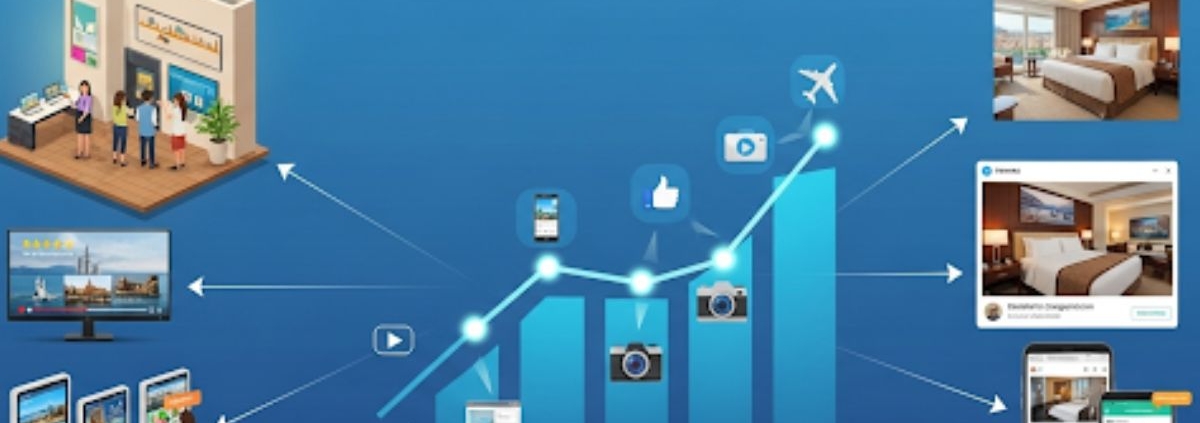Hotel Media’s Role in Tourism Growth Across Regions
In recent years, the tourism sector has become increasingly influenced by how hotels present themselves across digital and traditional media platforms. Destinations aren’t just sold on scenery anymore—they’re branded through the experience offered by their top resorts.
Radisson Blu Murree, for example, has emerged as more than just a luxury escape; it represents a growing narrative of highland tourism, elegance, and trust. Its prominence in hotel media not only boosts the property but elevates the entire region’s tourism profile.
Media visibility like this influences tourists who rely heavily on reviews, features, and brand stories to select their next destination. This surge in hospitality media content has reshaped how travelers interact with hotel brands, from early-stage research to final booking decisions.
Hotels as Storytellers in the Modern Tourism Industry
Hospitality marketing has moved beyond basic listings and into storytelling. High-end hotel brands now invest in cinematic videos, influencer partnerships, and behind-the-scenes features to generate emotional connections. This is especially vital for properties situated in regions like Murree, where natural beauty competes with traveler convenience.
Through powerful media campaigns, hotels give personality to a location—introducing potential visitors to its charm, culture, and hospitality. This dynamic marketing approach influences more than the leisure traveler. Business conferences, wellness retreats, and international tourism boards all examine a property’s visibility and brand credibility before partnerships are formed.
Media highlights showcasing conference halls, eco-friendly initiatives, or culinary excellence not only attract tourists but build a professional reputation. Murree’s position in Pakistan’s tourism strategy owes a great deal to such curated hotel coverage.
Role of Hotel Media in Shaping Traveler Expectations
Tourists today are highly visual and research-focused. They want to see where they’re staying, hear from others who’ve been there, and compare experiences. Hotels that understand this have created rich content ecosystems—using everything from social reels to YouTube vlogs—to offer more than just a room view.
These visual stories bridge the gap between curiosity and booking. Murree’s highland resorts particularly benefit from this strategy. Scenic locations often face skepticism due to accessibility or lack of brand familiarity.
But when platforms are filled with well-lit, narrative-driven hotel content, traveler confidence increases. Through “soft influence,” these media stories validate traveler decisions. And it’s through curated visibility that new destinations get their chance to shine.
Regional Growth Driven by Hotel Narratives
High-quality hospitality doesn’t just attract travelers—it creates ripple effects in the local economy. When a hotel like Radisson Blu Murree garners attention in digital publications or appears in luxury travel roundups, it draws in high-spending tourists. These visitors bring more than their presence—they bring demand for local food, art, transport, and experiences.
Moreover, hotel-related media often highlights regional crafts, culinary traditions, and landscape stories. This leads to collaborative campaigns that benefit surrounding communities. Tourism grows not just in visitor count, but in cultural appreciation and economic contribution. This is especially evident in luxury hospitality sectors where media storytelling highlights both service and social responsibility.
Another key component lies in hotel news and media coverage that keeps investors and stakeholders informed. This coverage creates space for dialogue on hotel-led sustainability programs, local hiring, and development projects. It’s in these narratives that long-term regional partnerships form, anchored in trust and shared vision.
Building a National Image Through Hotel Media
In countries like Pakistan, hospitality media is also playing a role in shifting global perceptions. Historically underrepresented in the global travel arena, destinations like Murree are now catching the eye of international audiences thanks to polished, consistent hotel narratives. These aren’t just luxury stories—they are stories of security, beauty, professionalism, and ambition.
For tourism ministries and development boards, hotel media becomes an unofficial tool of soft diplomacy. It tells a better story about what the country offers. Travelers who once hesitated are now more open, thanks to polished media strategies from hotels that act as brand ambassadors for the country.
Conclusion
Hotel media is no longer a side piece to tourism—it’s the engine that drives its visibility, appeal, and growth. Properties like Radisson Blu Murree, with their strong media presence, don’t just fill rooms—they open doors for regional prosperity and global interest.



Leave a Reply
Want to join the discussion?Feel free to contribute!